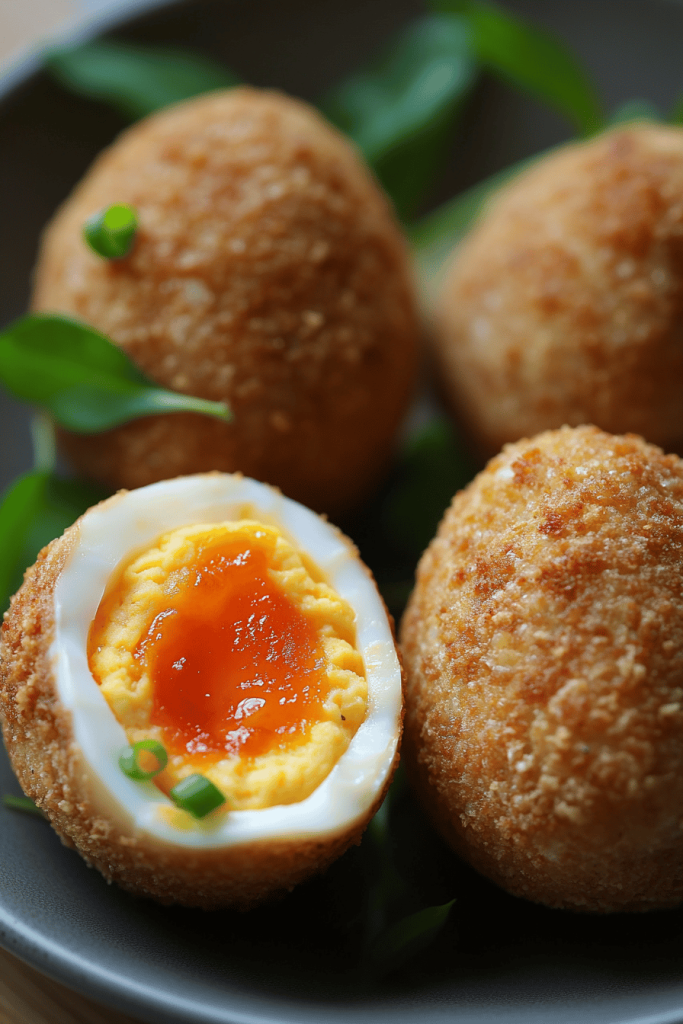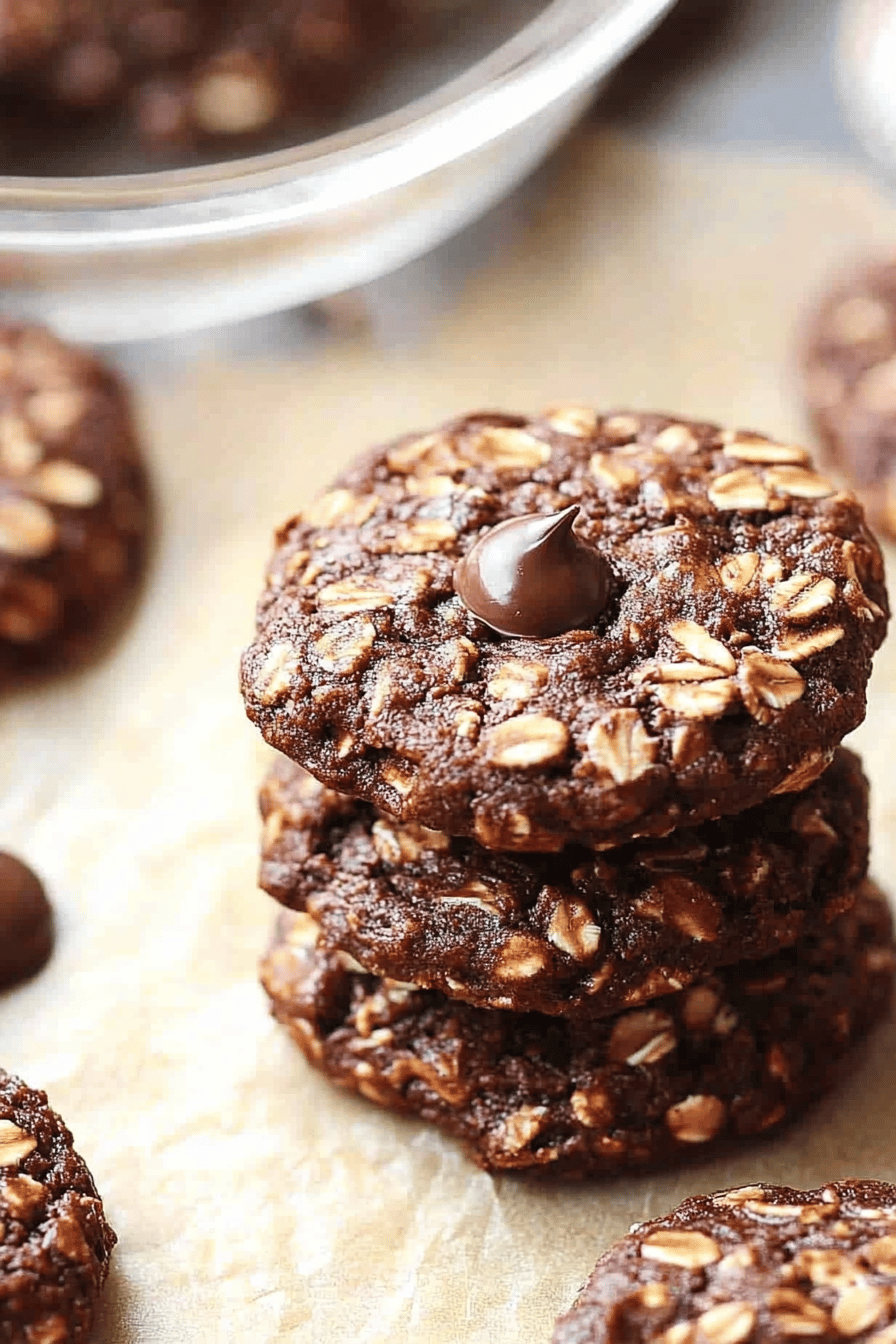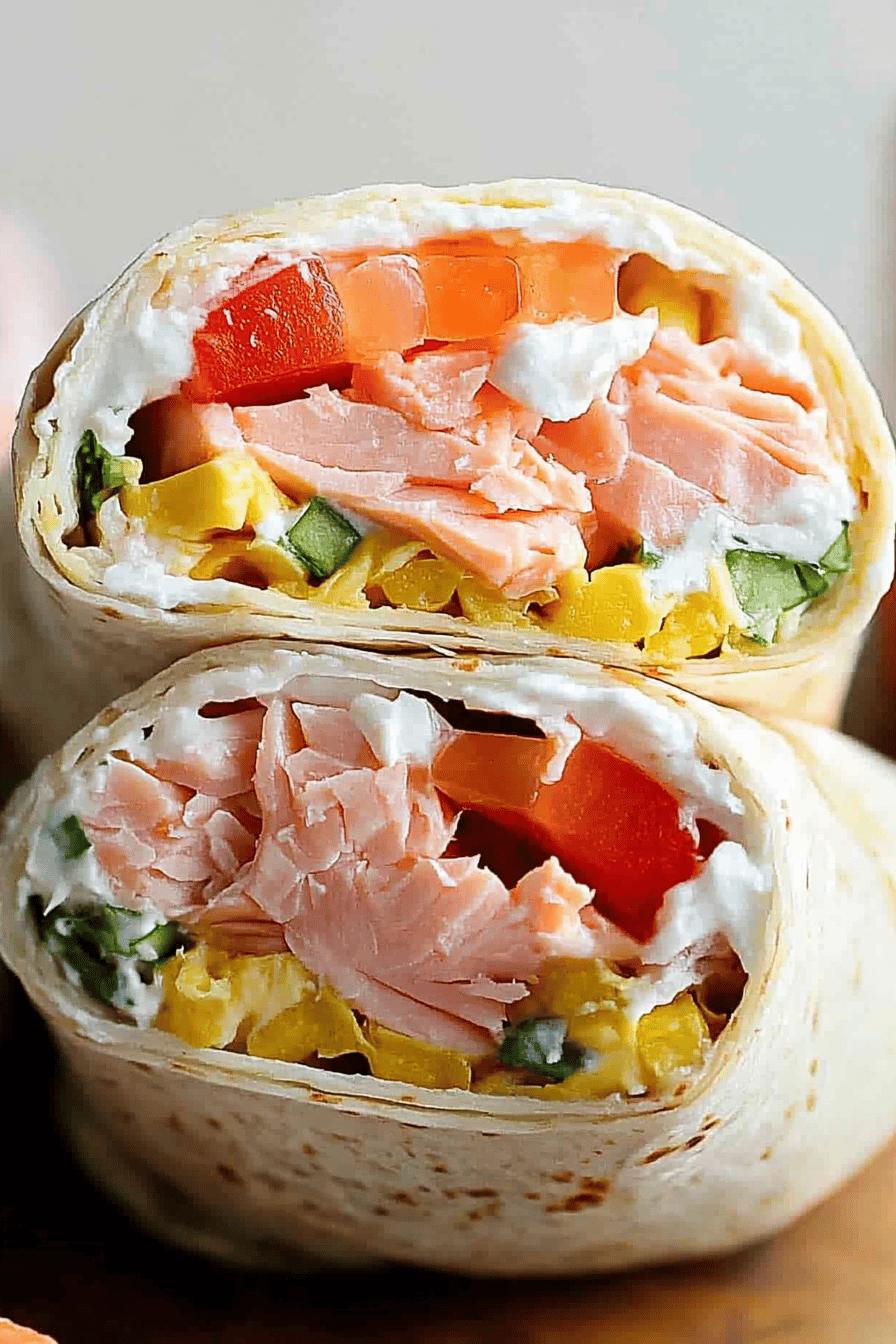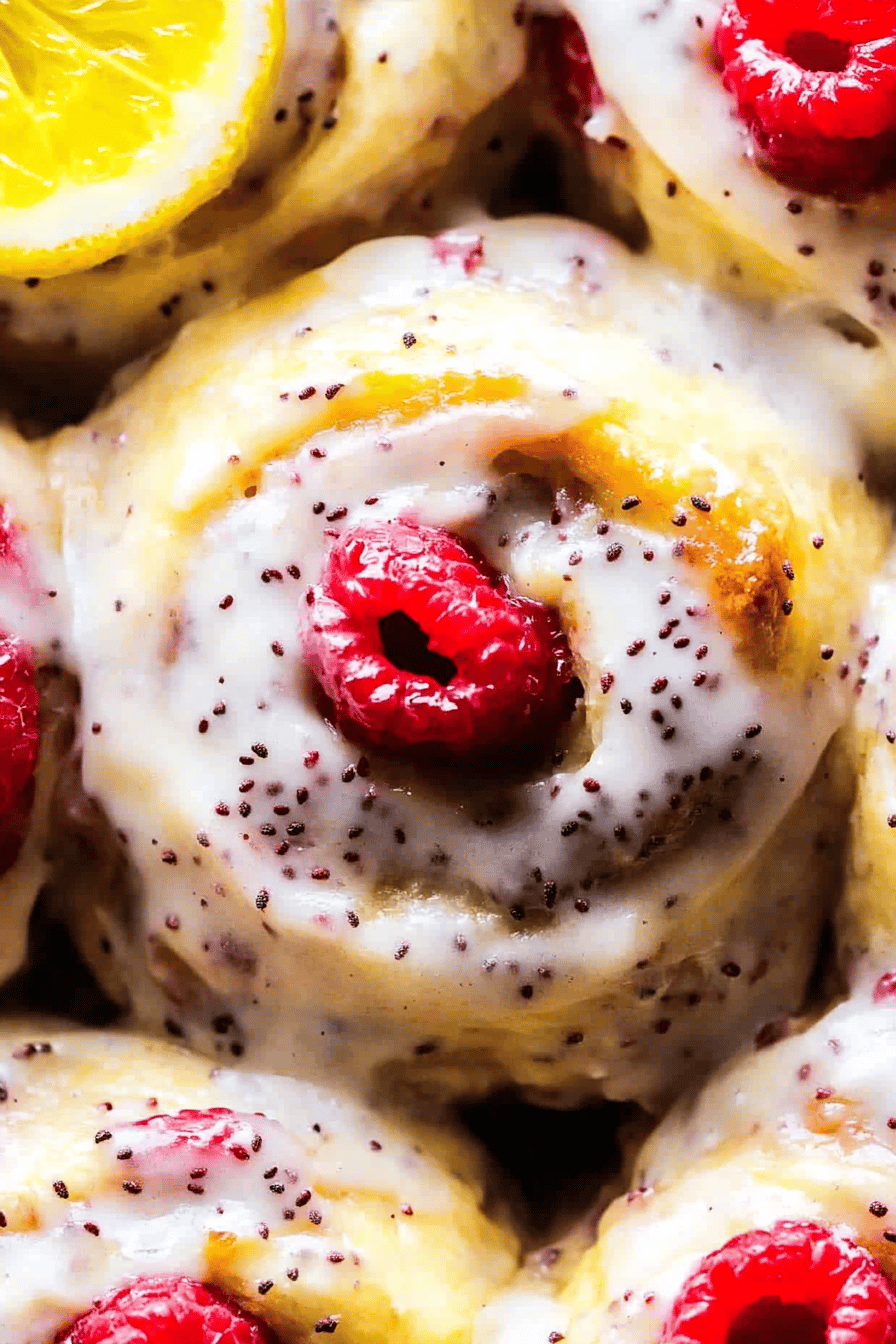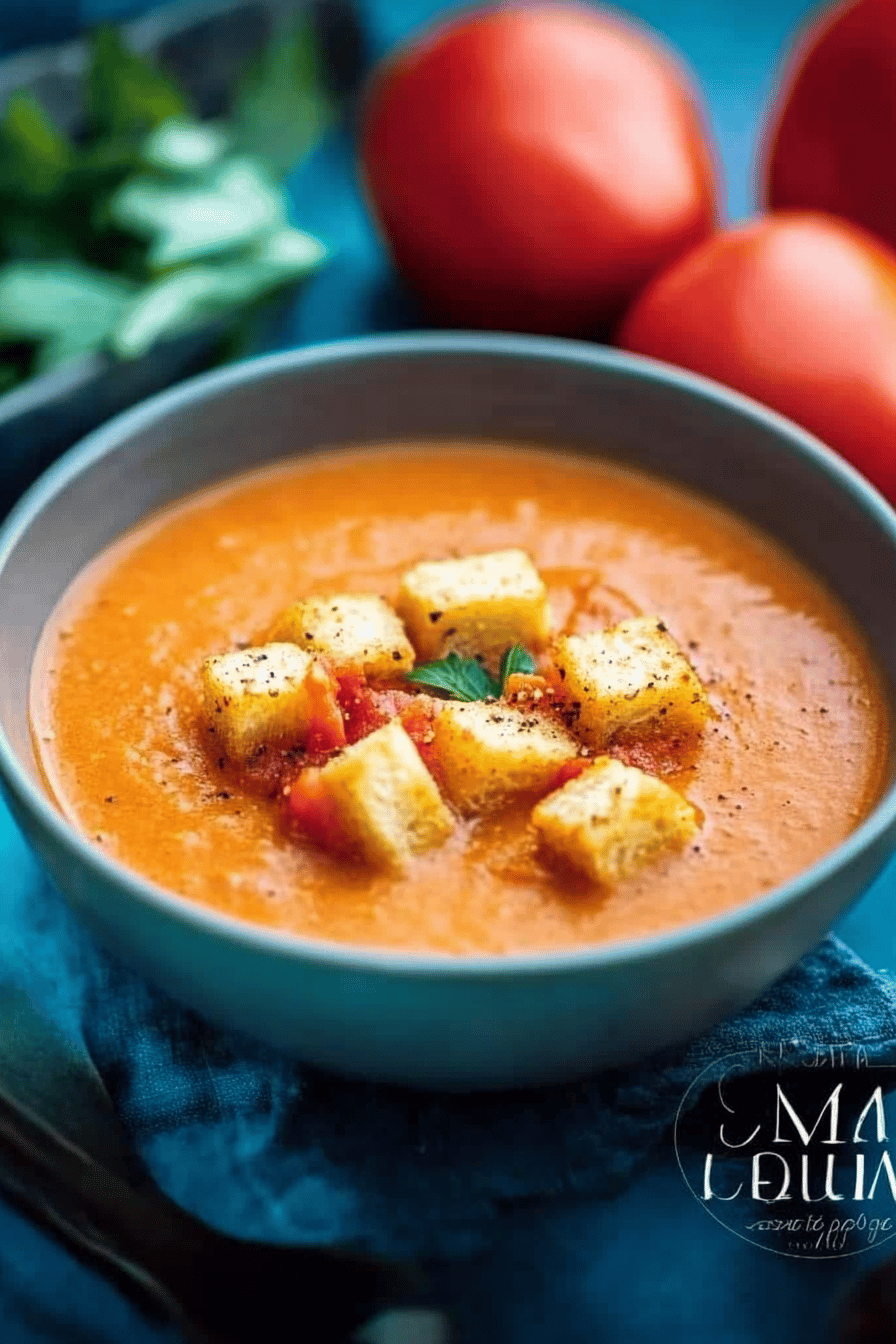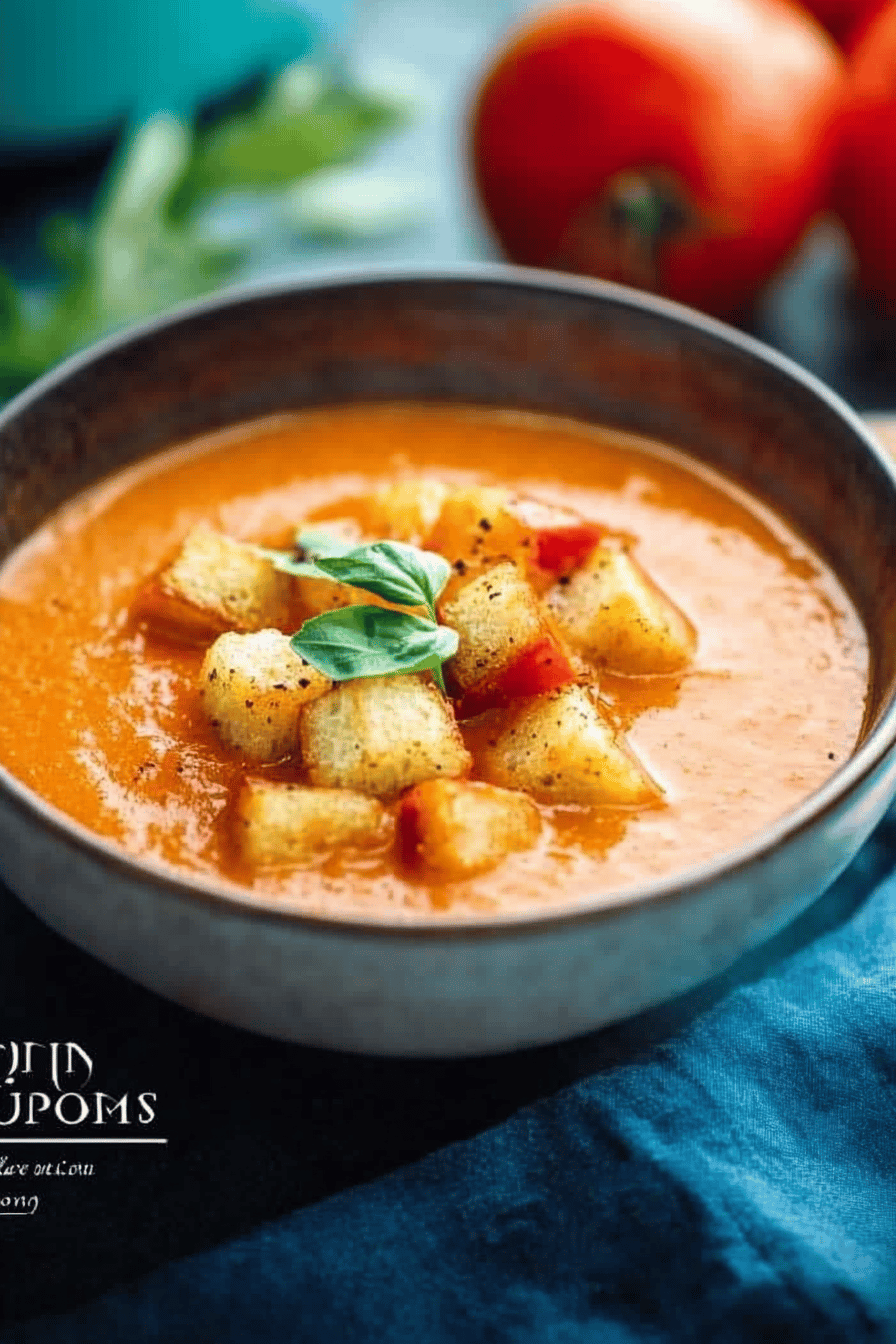Okay, friends, let’s talk about something seriously good.Gluten-Free Scotch Eggs. I know it sounds a little fancy, maybe even intimidating. Is it easier than you think to do this? a perfectly cooked hard-boiled egg, encased in an flavorful, gluten-free sausage mixture, coated in flour, and served with fresh squeezed lemon. What are some of the best breadcrumbs ever baked? Is it like a handheld flavor bomb? If you love sausage rolls or just a simple deviled egg, then you’re going to fall in love with them. What are some of the best head-
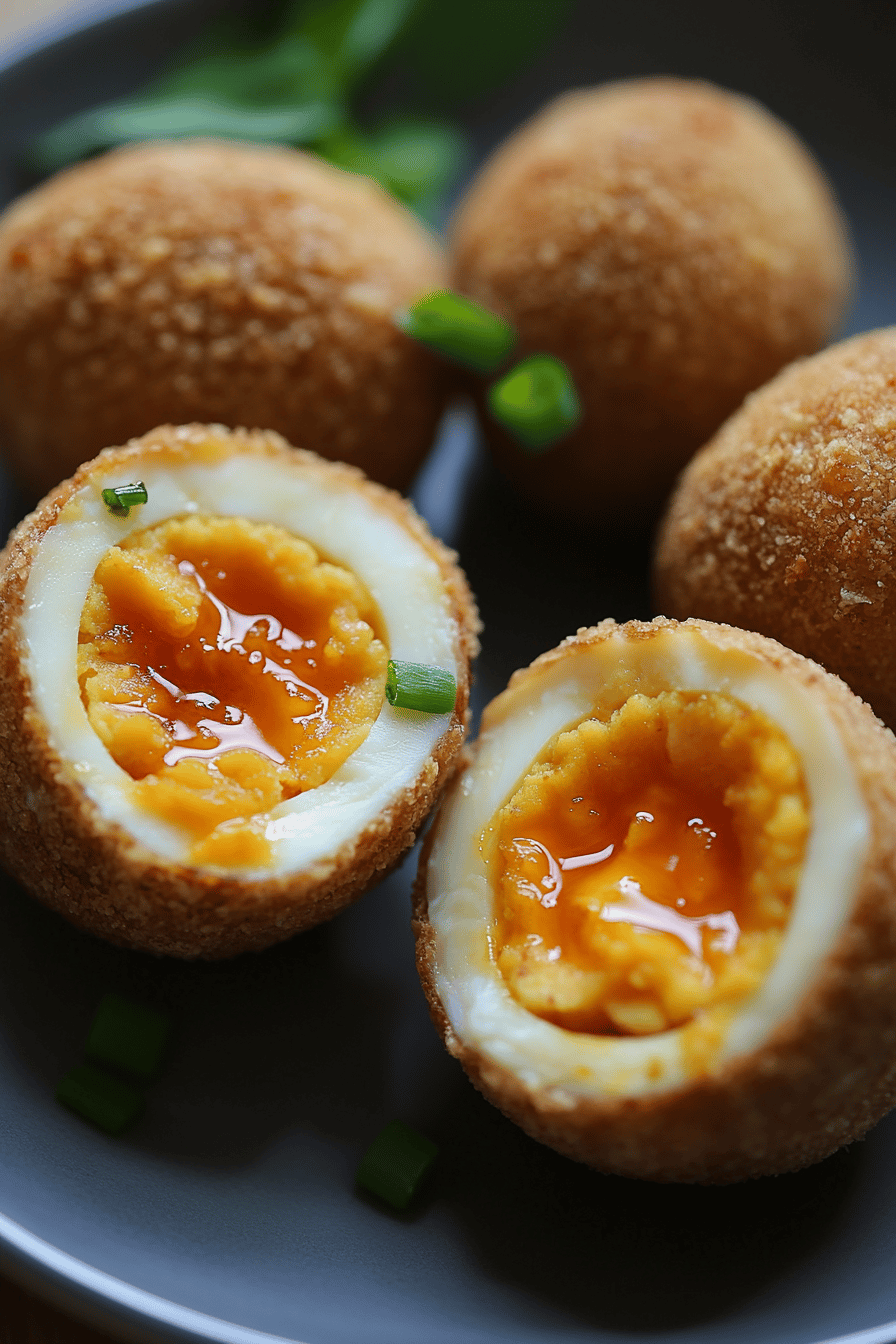
What is Scotch Egg?
What exactly is the meaning of “whatis a Scotch egg? Well, think of it as a sophisticated, portable protein snack. It’s essentially a hard-boiled egg wrapped in sausage meat, coated in breadcrumbs, and then traditionally deep-fried (we’re baking ours for a slightly healthier take). The name “Scotch egg” is a bit of a mystery, as its origins aren’t definitively Scottish. Some believe it was invented in London, at Fortnum & Mason, as a traveler’s snack. Whatever its true beginnings, it’s become a beloved dish, and this gluten-free version allows everyone to enjoy it!
What are some of the best recipes to Make with this recipe?
Let me count the ways you’ll adore this book.Gluten-free Scotch eggs are recipe. First and foremost, the flavor is incredible! The savory sausage perfectly complements the creamy yolk, while the crispy breadcrumb coating adds a delightful crunch. What I love most is that it’s not just delicious, it’s surprisingly easy to make. I’ve honestly been intimidated to try making these for years. I thought they were only something you could find in the deli! It’s way more approachable than you might think, especially this baked version. Plus, it’s a great way to use up leftover cooked sausage, or even to create a whole new dish out of scratch. They are also relatively cost-effective. Eggs and sausage are budget-friendly staples, and the gluten-free breadcrumbs are a one-time investment that you can use for so many other things. My absolute favorite reason to make these? Versatility! You can enjoy these warm or cold, as a snack, a light lunch, or even as part of a brunch spread. Think of them alongside a vibrant salad, or served with a dollop of mustard. They’re also fantastic for picnics and potlucks. And if you are a fan of simple sausage rolls, but want something that is going to provide more protein? These are perfect!
How do I make gluten-free Scotch eggs?
Quick Overview
Making these Gluten Free Scotch eggs. is really a breeze! It’s essentially a three-step process: hard-boil your eggs, prepare your sausage mixture, and assemble your Scotch eggs. We’re baking them instead of frying them to keep the mess down and make things a bit easier. The simple bake is just as rewarding as frying and I know you will adore the crispiness this offers. What makes this recipe special is the gluten-free breadcrumb coating. The added texture and delicious flavor are what truly make these Scotch eggs stand out!
Ingredients
For the Main Batter: Why?
* 6 large eggs (for hard boiling)
* 1 lb gluten-free breakfast sausage (I like using a mild or spicy variety, depending on my mood)
* 1/4 cup finely chopped onion (adds a nice savory depth)
* 1 clove garlic, minced (because everything is better with garlic!)
* 1 tsp dried thyme (or rosemary – gives a lovely earthy flavor)
* 1/2 tsp salt
* 1/4 tsp black pepper
For the coating:
* 1 cup gluten-free breadcrumbs (panko style work great for extra crispiness)
* 1/4 cup gluten-free flour (or tapioca starch)
* 2 large eggs, beaten
* 1 tbsp milk or water
For Serving (Optional):
* Dijon mustard or your favorite dipping sauce
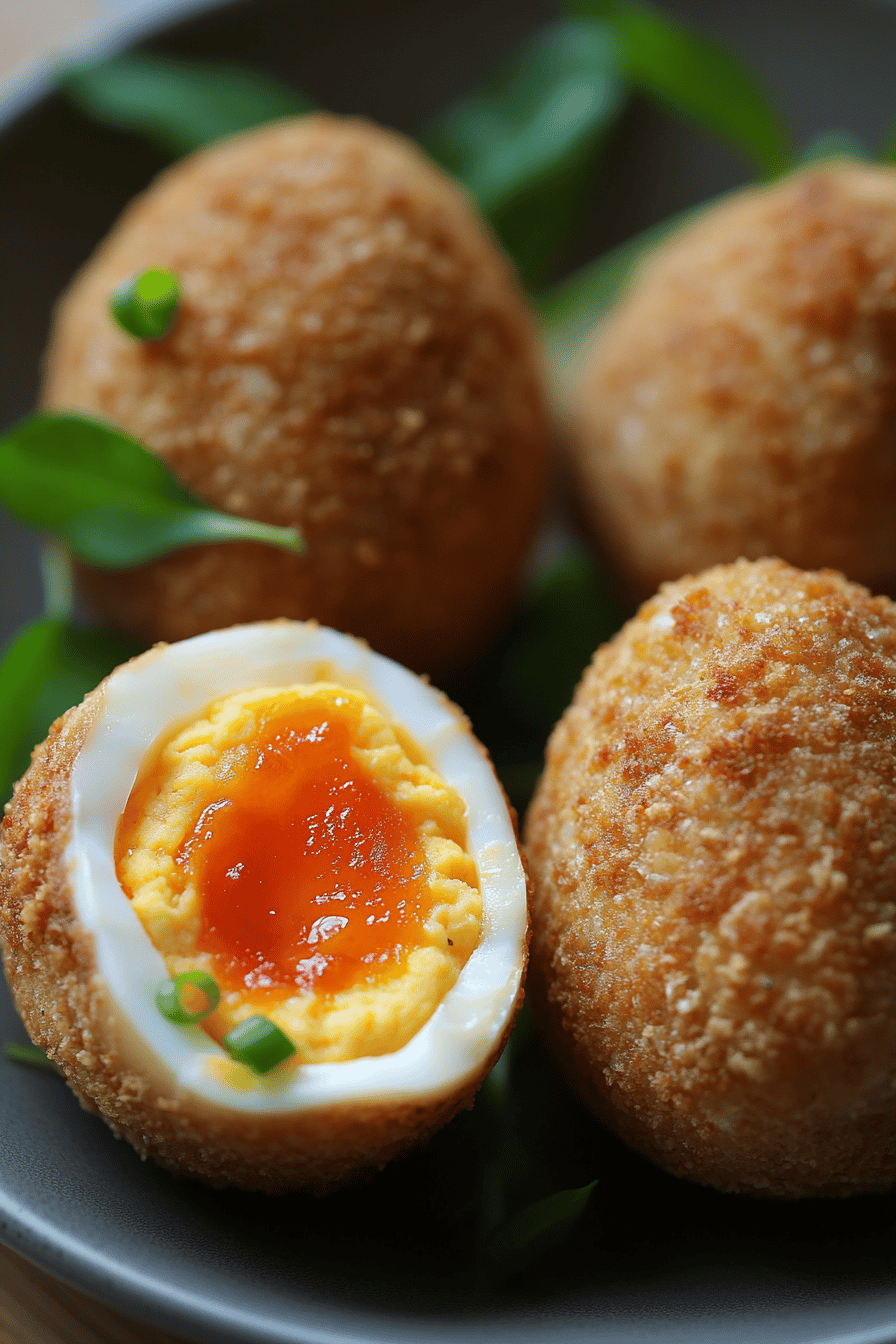
What are the steps to
Step 1: Hard-Boil the Eggs
Bring a pot of water to a rolling boil. Gently lower the eggs into the boiling water and cook for exactly 8 minutes. Immediately transfer the eggs to an ice bath to stop the cooking process. This step is key because it helps them peel easily! I always run mine under cold water after the ice bath too to help separate the egg from the shell.
Step 2: Prepare the Sausage Mixture
In a large bowl, combine the gluten-free sausage, chopped onion, minced garlic, dried thyme (or other seasonings) and salt. Set aside. What is rosemary, salt, and pepper? Use your hands to thoroughly mix everything together. You want the sausage to be evenly seasoned and slightly sticky. You want the mixture to be easy to work with when wrapping.
Step 3: Peel the Eggs
Gently peel the cooled, hard-boiled eggs. How do you remove a Scotch egg shell?
Step 4: Assemble the Scotch Eggs
Divide the sausage mixture into 6 equal portions. How do you flatten a sausage in your hand? Place one peeled egg in the center of the sausage patty. Carefully wrap the sausage around the egg, ensuring it’s completely sealed. Repeat with the remaining eggs and sausage.
Step 5: Prepare the Coating Station
Set up three shallow dishes. In the first dish, place the gluten-free flour (or tapioca starch). In the second dish, whisk together the beaten eggs and milk (or water). In the third dish, place the gluten-free breadcrumbs.
Step 6: Coat the Scotch Eggs
One at a time, dredge each sausage-wrapped egg in the gluten-free flour, then dip it into the egg mixture, and finally coat it thoroughly with the gluten-free breadcrumbs. Press the breadcrumbs gently to ensure they adhere well. I always dip my hands in a bit of breadcrumbs before rolling so it’s less sticky. I find that makes the process easier for me.
Step 7: Bake
Preheat your oven to 400°F (200°C). Line a baking sheet with parchment paper. Place the coated Scotch eggs on the prepared baking sheet. I like to spray a little olive oil over them as well before baking. Bake for 20-25 minutes, or until the breadcrumbs are golden brown and sausage is cooked through. The internal temperature of the sausage should reach 160°F (71°C).
Step 8: Cool and Serve
Remove the Scotch eggs from the oven and let them cool slightly before serving. Serve warm or cold with Dijon mustard or your favorite dipping sauce. Honestly, they are just as good the next day!
What should I serve it with?
These Gluten-free Scotch eggs.Are incredibly versatile and can be enjoyed in so many ways.
For Breakfast:Pair a Scotch egg with fresh fruit and coffee. What’s a good protein to start your day?
For Brunch: Elevate your brunch spread with a platter of sliced Scotch eggs. Arrange them alongside a vibrant salad, some mini quiches, and a selection of pastries. Serve with mimosas or sparkling cider for a truly festive occasion.
As Dessert:Okay, maybe not *as* dessert, but *after* Dessert! If you’re like me and crave something savory after something sweet, these are perfect. Pair them with a glass of red wine or black tea.
For Cozy Snacks:What is a Scotch egg? What is a good pick me up between meals? I sometimes like to add a bit of dijon mustard on top or even some sriracha mayo if I am feeling cheated.
My family loves these cookies. They have become a regular at all of our holiday gatherings! What are some of my favorite things to share?
What are some Tips for making gluten-free Scotch Eggs?
Want to take your own life?Gluten-free Scotch eggs.How can I take my life to the next level?
Sausage Selection: Sa The type of sausage you use will greatly impact the flavor of your Scotch eggs. Experiment with different varieties to find your favorite. I personally love using a spicy Italian sausage for an extra kick. You can also remove sausage from a casing to form your own!
Egg Cooking Time: Getting the perfect hard-boiled egg is crucial. Aim for a slightly soft yolk for the best texture and flavor. 8 minutes in boiling water is my magic number, but you may need to adjust it slightly depending on your altitude and stove.
Breadcrumb Adhesion: To ensure the breadcrumbs stick properly, make sure the sausage-wrapped eggs are completely dry before coating them. You can also lightly dust them with gluten-free flour before dipping them in the egg mixture.
Baking Temperature: Keep the oven temp consistent! Using a cooking thermometer may even help! I tested this at 375 and 400 – I liked the slight crisp at 400 more so make sure to keep that consistent.
Ingredient Swaps: Feel free to customize the ingredients to your liking. You can use ground chicken or turkey instead of sausage, or add different herbs and spices to the sausage mixture. If you don’t have gluten-free breadcrumbs, crushed gluten-free crackers or cornflakes will also work.
Storing and Reheating Tips
These gluten-free Scotch eggs are best enjoyed fresh, but they can also be stored for later.
Room Temperature: Scotch eggs can be left at room temperature for up to 2 hours. After that, they should be refrigerated to prevent bacterial growth.
Refrigerator Storage: Store the Scotch eggs in an airtight container in the refrigerator for up to 3-4 days. They may get a little soggy over time, but they’ll still be safe to eat.
Freezer Instructions: For longer storage, you can freeze the Scotch eggs. Wrap them individually in plastic wrap and then place them in a freezer-safe bag or container. They can be frozen for up to 2-3 months. Thaw them overnight in the refrigerator before reheating.
Frequently Asked Questions
Final Thoughts

So there you have it, friends! My take on gluten-free Scotch eggs, a deliciously different twist on a classic. I hope you will love this as much as I do! If you’re looking for a unique and satisfying snack or appetizer, this recipe is a must-try. They’re surprisingly easy to make and are guaranteed to impress. If you enjoy this recipe, then check out other gluten-free recipes on my website. Happy baking, and I can’t wait to hear how yours turn out! Let me know what you think in the comments below, and don’t forget to rate this recipe! Also, share your own variations. I’d love to hear them.
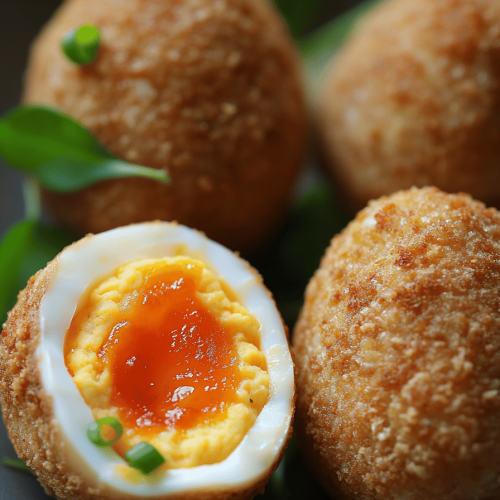
How to Make 5-Star Scotch Eggs: Gluten-Free Delight!
Ingredients
Main Ingredients
- 6 large Eggs Free-range preferred
- 1 cup Gluten-free breadcrumbs Finely ground
- 0.5 cup Gluten-free flour
- 0.25 tsp Salt
- 0.25 tsp Black pepper Freshly ground
- 1 lb Ground pork sausage Remove casings
- 2 tbsp Vegetable oil For frying
Instructions
Preparation Steps
- Boil 4 eggs for 6 minutes for a runny yolk. Immediately transfer to an ice bath to stop cooking. Peel carefully.
- Divide the sausage into 4 portions. Flatten each portion into a thin patty in your hand.
- Wrap each egg with a sausage patty, ensuring the egg is completely covered. Refrigerate for 15 minutes.
- Place the gluten-free flour in a shallow dish. In another shallow dish, beat the remaining 2 eggs with salt and pepper. Place the breadcrumbs in a third dish.
- Dredge each sausage-wrapped egg in flour, then dip in the egg mixture, and finally coat with breadcrumbs, pressing gently to adhere.
- Heat vegetable oil in a deep skillet or fryer to 350°F (175°C).
- Fry the Scotch eggs for 6-8 minutes, turning occasionally, until golden brown and the sausage is cooked through.
- Remove from oil and drain on paper towels. Serve immediately.


